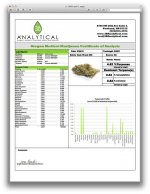Why not start a new thread on cacti? Cause we're quite OT LoL...
'Peruvian type'? Peru and Bolivia share the highest biodiversity when it comes to cacti .
.
Also, peyote is extinct in many of his original habitats (got eaten by hippies).
They are often burrowed deeply and just the flat tip shows covered half in sand and dust. Very easy to overlook, because a ten year old specimen may have only the size of a thumbnail (as said, the bigger ones got too often found already).
'Peruvian type'? Peru and Bolivia share the highest biodiversity when it comes to cacti
Also, peyote is extinct in many of his original habitats (got eaten by hippies).
They are often burrowed deeply and just the flat tip shows covered half in sand and dust. Very easy to overlook, because a ten year old specimen may have only the size of a thumbnail (as said, the bigger ones got too often found already).






